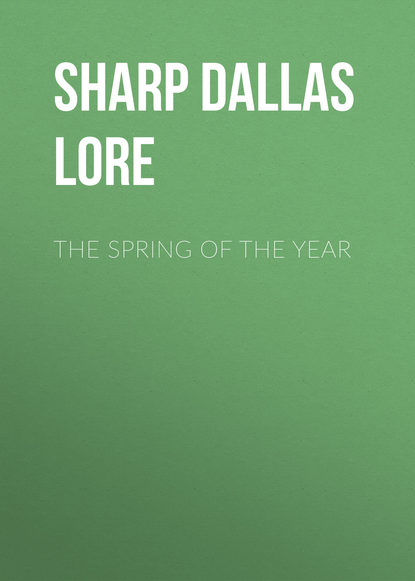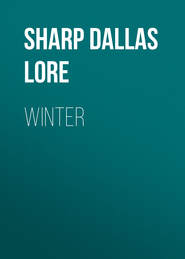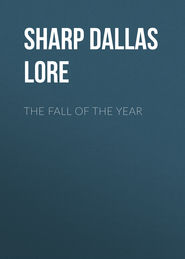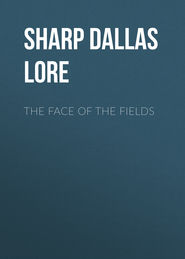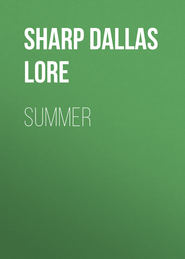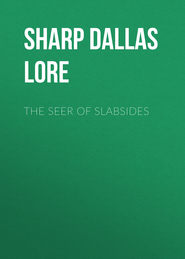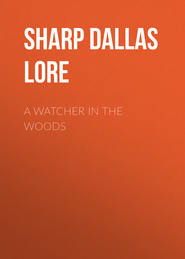По всем вопросам обращайтесь на: info@litportal.ru
(©) 2003-2024.
✖
The Spring of the Year
Настройки чтения
Размер шрифта
Высота строк
Поля
VII
You should see a “spring peeper,” the tiny Pickering’s frog —if you can. The marsh and the meadows will be vocal with them, but one of the hardest things that you will try to do this spring will be to see the shrill little piper, as he plays his bagpipe in the rushes at your very feet. But hunt until you do see him. It will sharpen your eyes and steady your patience for finding other things.
VIII
You should see the sun come up on a May morning. The dawn is always a wonderful sight, but never at other times attended with quite the glory, with quite the music, with quite the sweet fragrance, with quite the wonder of a morning in May. Don’t fail to see it. Don’t fail to rise with it. You will feel as if you had wings – something better even than wings.
IX
You should see a farmer ploughing in a large field – the long straight furrows of brown earth; the blackbirds following behind after worms; the rip of the ploughshare; the roll of the soil from the smooth mould-board – the wealth of it all. For in just such fields is the wealth of the world, and the health of it, too. Don’t miss the sight of the ploughing.
X
Go again to the field, three weeks later, and see it all green with sprouting corn, or oats, or one of a score of crops. Then – but in “The Fall of the Year” I ask you to go once more and see that field all covered with shocks of ripened corn, shocks that are pitched up and down its long rows of corn-butts like a vast village of Indian tepees, each tepee full of golden corn.
XI
You should see, hanging from a hole in some old apple tree, a long thin snake-skin! It is the latch-string of the great crested flycatcher. Now why does this bird always use a snake-skin in his nest? and why does he usually leave it hanging loose outside the hole? Questions, these, for you to think about. And if you will look sharp, you will see in even the commonest things questions enough to keep you thinking as long as you live.
XII
You should see a dandelion. A dandelion? Yes, a dandelion, “fringing the dusty road with harmless gold.” But that almost requires four eyes – two to see the dandelion and two more to see the gold – the two eyes in your head, and the two in your imagination. Do you really know how to see anything? Most persons have eyes, but only a few really see. This is because they cannot look hard and steadily at anything. The first great help to real seeing is to go into the woods knowing what you hope to see – seeing it in your eye, as we say, before you see it in the out-of-doors. No one would ever see a tree-toad on a mossy tree or a whip-poor-will among the fallen leaves who did not have tree-toads and whip-poor-wills in mind. Then, secondly, look at the thing hard until you see in it something peculiar, something different from anything like it that you ever saw before. Don’t dream in the woods; don’t expect the flowers to tell you their names or the wild things to come up and ask you to wait while they perform for you.
CHAPTER V
IF YOU HAD WINGS
If you had wings, why of course you would wear feathers instead of clothes, and you might be a crow! And then of course you would steal corn, and run the risk of getting three of your big wing feathers shot away.
All winter long, and occasionally during this spring, I have seen one of my little band of crows flying about with a big hole in his wing, – at least three of his large wing feathers gone, shot away probably last summer, – which causes him to fly with a list or limp, like an automobile with a flattened tire, or a ship with a shifted ballast.
Now for nearly a year that crow has been hobbling about on one whole and one half wing, trusting to luck to escape his enemies, until he can get three new feathers to take the places of those that are missing. “Well, why doesn’t he get them?” you ask. If you were that crow, how would you get them? Can a crow, by taking thought, add three new feathers to his wing?
Certainly not. That crow must wait until wing-feather season comes again, just as an apple tree must wait until apple-growing season comes to hang its boughs with luscious fruit. The crow has nothing to do with it. His wing feathers are supplied by Nature once a year (after the nesting-time), and if a crow loses any of them, even if right after the new feathers had been supplied, that crow will have to wait until the season for wing feathers comes around once more – if indeed he can wait and does not fall a prey to hawk or owl or the heavy odds of winter.
But Nature is not going to be hurried on that account, nor caused to change one jot or tittle from her wise and methodical course. The Bible says that the hairs of our heads are numbered. So are the feathers on a crow’s body. Nature knows just how many there are altogether; how many there are of each sort – primaries, secondaries, tertials, greater coverts, middle coverts, lesser coverts, and scapulars – in the wing; just how each sort is arranged; just when each sort is to be moulted and renewed. If Master Crow does not take care of his clothes, then he will have to go without until the time for a new suit comes; for Mother Nature won’t patch them up as your mother patches up yours.
But now this is what I want you to notice and think about: that just as an apple falls according to a great law of Nature, so a bird’s feathers fall according to a law of Nature. The moon is appointed for seasons; the sun knoweth his going down; and so light and insignificant a thing as a bird’s feather not only is appointed to grow in a certain place at a certain time, but also knoweth its falling off.
Nothing could look more haphazard, certainly, than the way a hen’s feathers seem to drop off at moulting time. The most forlorn, undone, abject creature about the farm is the half-moulted hen. There is one in the chicken-yard now, so nearly naked that she really is ashamed of herself, and so miserably helpless that she squats in a corner all night, unable to reach the low poles of the roost. It is a critical experience with the hen, this moulting of her feathers; and were it not for the protection of the yard it would be a fatal experience, so easily could she be captured. Nature seems to have no hand in the business at all; if she has, then what a mess she is making of it!
But pick up the hen, study the falling of the feathers carefully, and lo! here is law and order, every feather as important to Nature as a star, every quill as a planet, and the old white hen as mightily looked after by Nature as the round sphere of the universe!
Once a year, usually after the nesting-season, it seems a physical necessity for most birds to renew their plumage.
We get a new suit (some of us) because our old one wears out. That is the most apparent cause for the new annual suit of the birds. Yet with them, as with some of us, the feathers go out of fashion, and then the change of feathers is a mere matter of style, it seems.
For severe and methodical as Mother Nature must be (and what mother or teacher or ruler, who has great things to do and a multitude of little things to attend to, must not be severe and methodical?) – severe, I say, as Mother Nature must be in looking after her children’s clothes, she has for all that a real motherly heart, it seems.
For see how she looks after their wedding garments – giving to most of the birds a new suit, gay and gorgeous, especially to the bridegrooms, as if fine feathers did make a fine bird! Or does she do all of this to meet the fancy of the bride, as the scientists tell us? Whether so or not, it is a fact that among the birds it is the bridegroom who is adorned for his wife, and sometimes the fine feathers come by a special moult – an extra suit for him!
Take Bobolink, for instance. He has two complete moults a year, two new suits, one of them his wedding suit. Now, as I write, I hear him singing over the meadow – a jet-black, white, and cream-buff lover, most strikingly adorned. His wife, down in the grass, looks as little like him as a sparrow looks like a blackbird. But after the breeding-season he will moult again, changing color so completely that he and his wife and children will all look alike, all like sparrows, and will even lose their names, flying south now under the name of “reed-birds.”
Bobolink passes the winter in Brazil; and in the spring, just before the long northward journey begins, he lays aside his fall traveling clothes and puts on his gay wedding garments and starts north for his bride. But you would hardly know he was so dressed, to look at him; for, strangely enough, he is not black and white, but still colored like a sparrow, as he was in the fall. Apparently he is. Look at him more closely, however, and you will find that the brownish-yellow color is all caused by a veil of fine fringes hanging from the edges of the feathers. The bridegroom wearing the wedding veil? Yes! Underneath is the black and white and cream-buff suit. He starts northward; and, by the time he reaches Massachusetts, the fringe veil is worn off and the black and white bobolink appears. Specimens taken after their arrival here still show traces of the brownish-yellow veil.
Many birds do not have this early spring moult at all; and with most of those that do, the great wing feathers are not then renewed as are bobolink’s, but only at the annual moult after the nesting is done. The great feathers of the wings are, as you know, the most important feathers a bird has; and the shedding of them is so serious a matter that Nature has come to make the change according to the habits and needs of the birds. With most birds the body feathers begin to go first, then the wing feathers, and last those of the tail. But the shedding of the wing feathers is a very slow and carefully regulated process.
In the wild geese and other water birds the wing feathers drop out with the feathers of the body, and go so nearly together that the birds really cannot fly. On land you could catch the birds with your hands. But they keep near or on the water and thus escape, though times have been when it was necessary to protect them at this season by special laws; for bands of men would go into their nesting-marshes and kill them with clubs by hundreds!
The shedding of the feathers brings many risks to the birds; but Nature leaves none of her children utterly helpless. The geese at this time cannot fly because their feathers are gone; but they can swim, and so get away from most of their natural enemies. On the other hand, the hawks that hunt by wing, and must have wings always in good feather, or else perish, lose their feathers so slowly that they never feel their loss. It takes a hawk nearly a year to get a complete change of wing feathers, one or two dropping out from each wing at a time, at long intervals apart.
Then here is the gosling, that goes six weeks in down, before it gets its first feathers, which it sheds within a few weeks, in the fall. Whereas the young quail is born with quills so far grown that it is able to fly almost as soon as it is hatched. These are real mature feathers; but the bird is young and soon outgrows these first flight feathers, so they are quickly lost and new ones come. This goes on till fall, several moults occurring the first summer to meet the increasing weight of the little quail’s growing body.
I said that Nature was severe and methodical, and so she is, where she needs to be, so severe that you are glad, perhaps, that you are not a crow. But Nature, like every wise mother, is severe only where she needs to be. A crow’s wing feathers are vastly important to him. Let him then take care of them, for they are the best feathers made and are put in to stay a year. But a crow’s tail feathers are not so vastly important to him; he could get on, if, like the rabbit in the old song, he had no tail at all.
In most birds the tail is a kind of balance or steering-gear, and not of equal importance with the wings. Nature, consequently, seems to have attached less importance to the feathers of the tail. They are not so firmly set, nor are they of the same quality or kind; for, unlike the wing feathers, if a tail feather is lost through accident, it is made good, no matter when. How do you explain that? Do you think I believe that old story of the birds roosting with their tails out, so that, because of generations of lost tails, those feathers now grow expecting to be plucked by some enemy, and therefore have only a temporary hold?
The normal, natural way, of course, is to replace a lost feather with a new one as soon as possible. But, in order to give extra strength to the wing feathers, Nature has found it necessary to check their frequent change; and so complete is the check that the annual moult is required to replace a single one. The Japanese have discovered the secret of this check, and are able by it to keep certain feathers in the tails of their cocks growing until they reach the enormous length of ten to twelve feet.
My crow, it seems, lost his three feathers last summer just after his annual moult; the three broken shafts he carries still in his wing, and must continue to carry, as the stars must continue their courses, until those three feathers have rounded out their cycle to the annual moult. The universe of stars and feathers is a universe of law, of order, and of reason.
CHAPTER VI
A CHAPTER OF THINGS TO DO THIS SPRING
I do not know where to begin – there are so many interesting things to do this spring! But, while we ought to be interested in all of the out-of-doors, it is very necessary to select some one field, say, the birds or flowers, for special study. That would help us to decide what to do this spring.
I
If there is still room under your window, or on the clothes-pole in your yard, or in a neighboring tree, nail up another bird-house. (Get “Methods of Attracting Birds” by Gilbert H. Trafton.) If the bird-house is on a pole or post, invert a large tin pan over the end of the post and nail the house fast upon it. This will keep cats and squirrels from disturbing the birds. If the bird-house is in a tree, saw off a limb, if you can without hurting the tree, and do the same there. Cats are our birds’ worst enemies.
II
Cats! Begin in your own home and neighborhood a campaign against the cats, to reduce their number and to educate their owners to the need of keeping them well fed and shut up in the house from early evening until after the early morning; for these are the cats’ natural hunting hours, when they do the greatest harm to the birds.
This does not mean any cruelty to the cat – no stoning, no persecution. The cat is not at fault. It is the keepers of the cats who need to be educated. Out of every hundred nests in my neighborhood the cats of two farmhouses destroy ninety-five! The state must come to the rescue of the birds by some new rigid law reducing the number of cats.
III
Speaking of birds, let me urge you to begin your watching and study early – with the first robins and bluebirds – and to select some near-by park or wood-lot or meadow to which you can go frequently. There is a good deal in getting intimately acquainted with a locality, so that you know its trees individually, its rocks, walls, fences, the very qualities of its soil. Therefore you want a small area, close at hand. Most observers make the mistake of roaming first here, then there, spending their time and observation in finding their way around, instead of upon the birds to be seen. You must get used to your paths and trees before you can see the birds that flit about them.
IV
In this haunt that you select for your observation, you must study not only the birds but the trees, and the other forms of life, and the shape of the ground (the “lay” of the land) as well, so as to know all that you see. In a letter just received from a teacher, who is also a college graduate, occurs this strange description: “My window faces a hill on which straggle brown houses among the deep green of elms or oaks or maples, I don’t know which.” Perhaps the hill is far away; but I suspect that the writer, knowing my love for the out-of-doors, wanted to give me a vivid picture, but, not knowing one tree from another, put them all in so I could make my own choice!
Learn your common trees, common flowers, common bushes, common animals, along with the birds.
V





